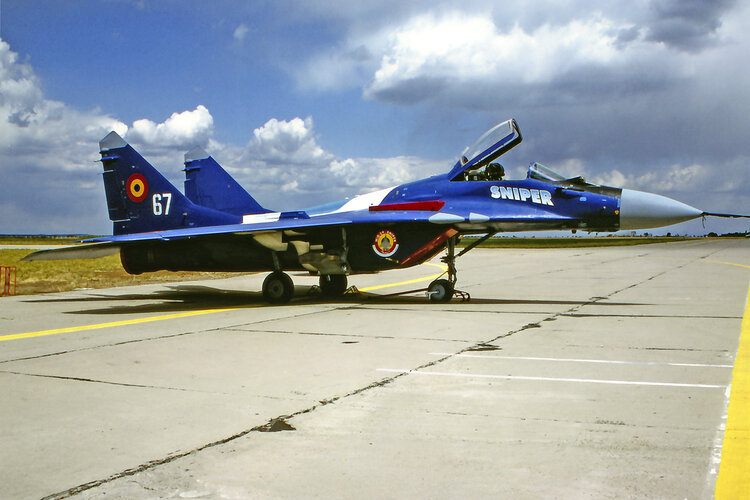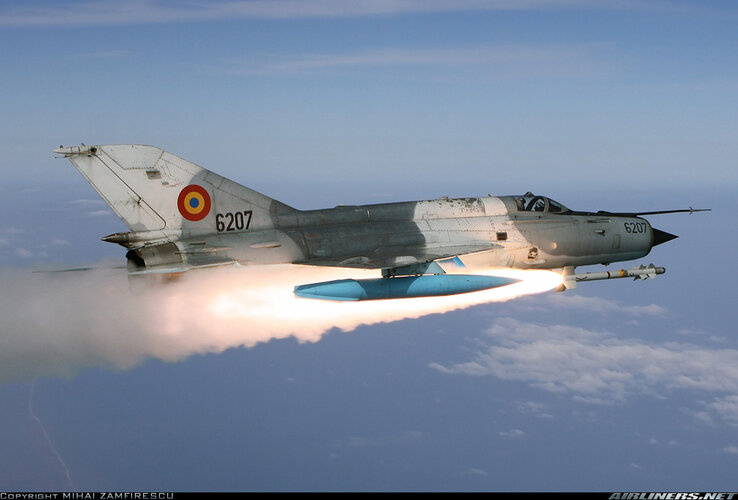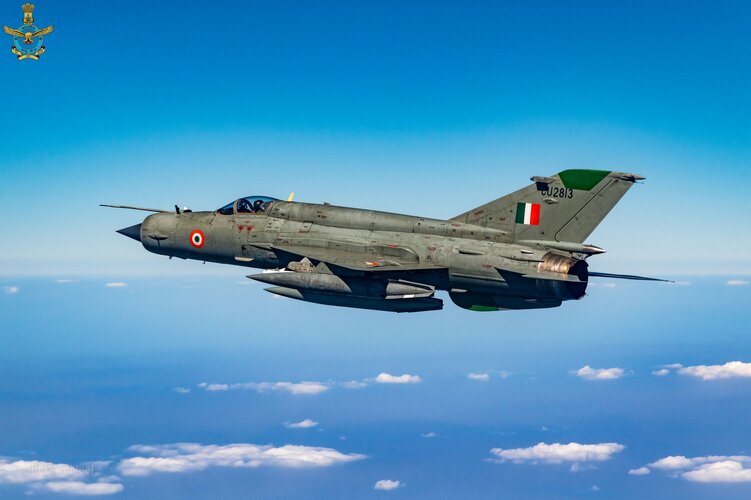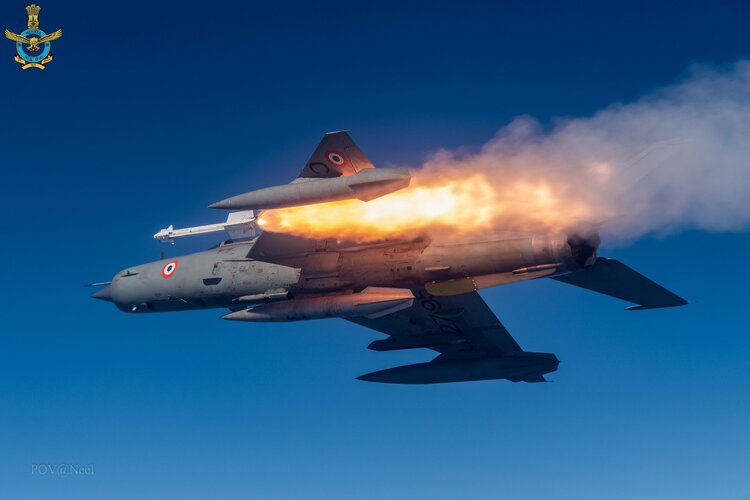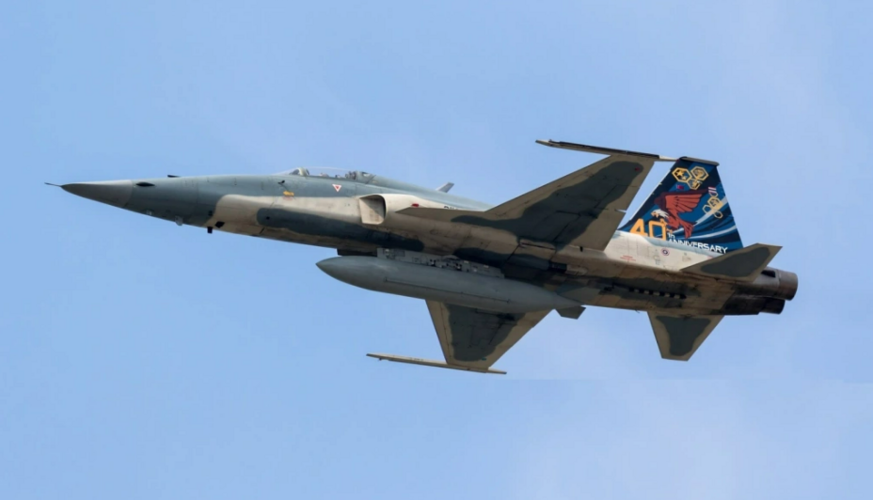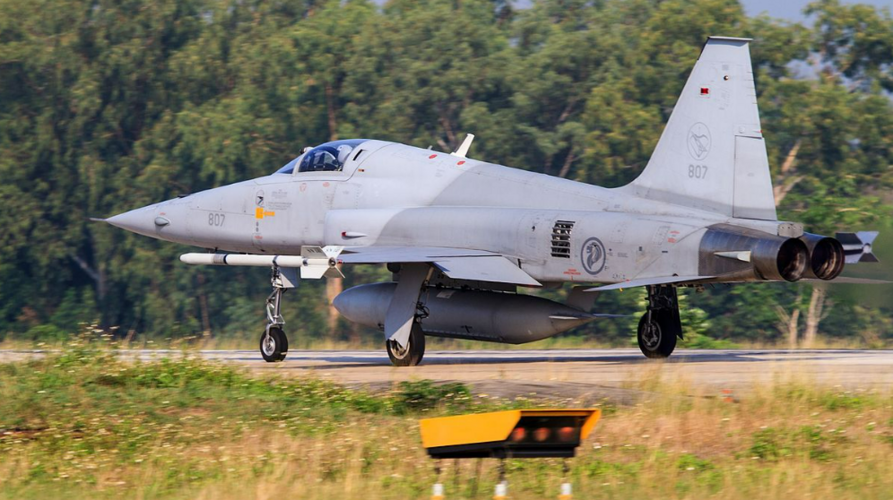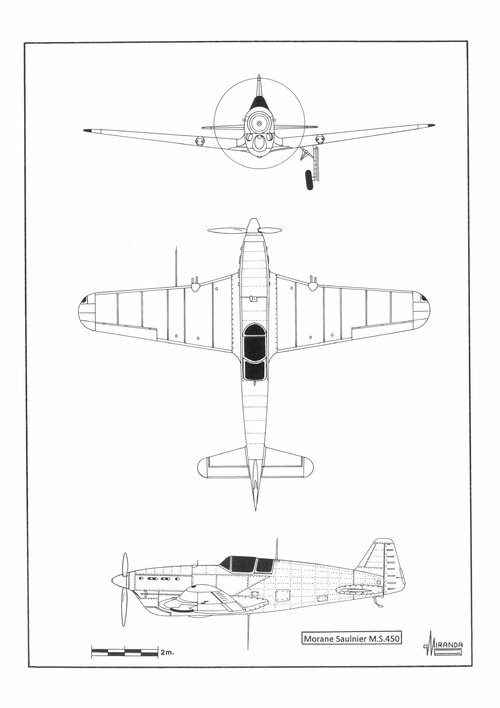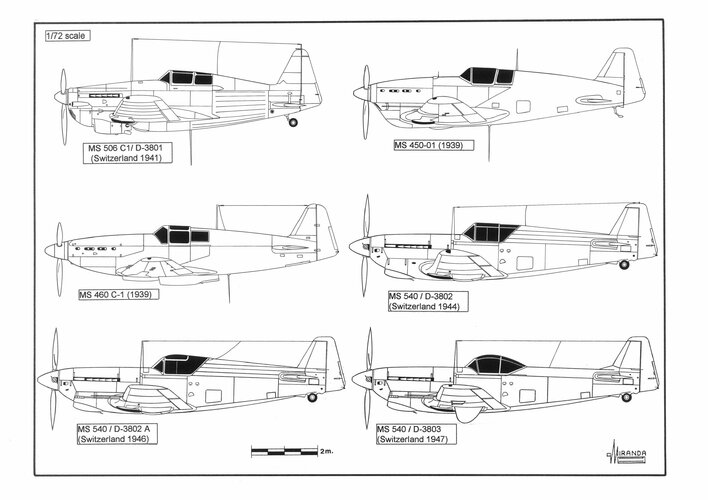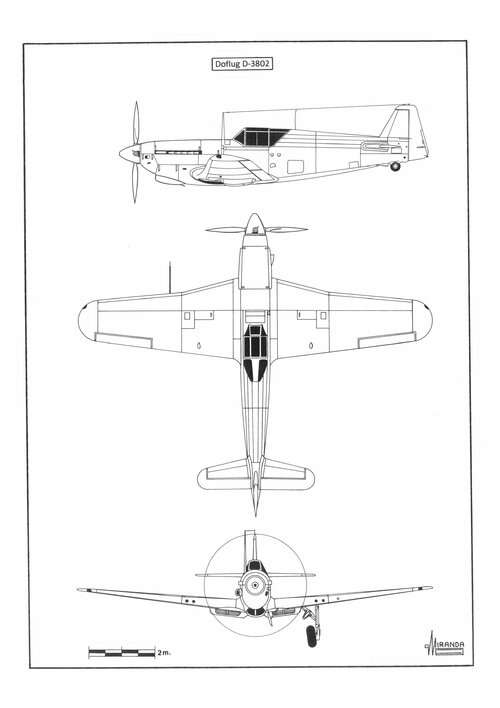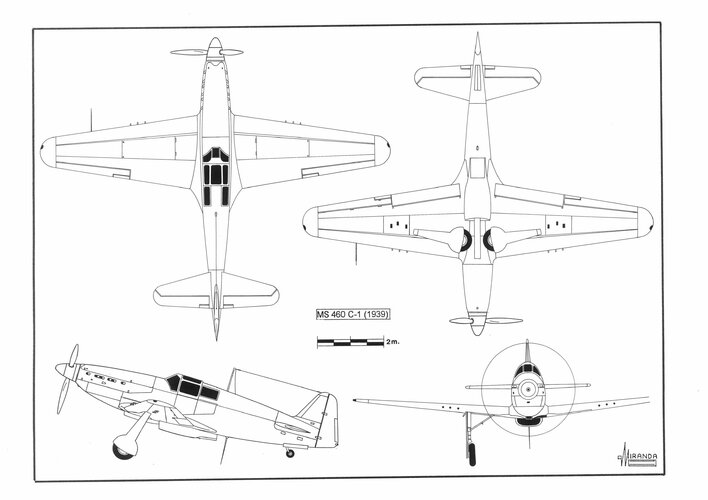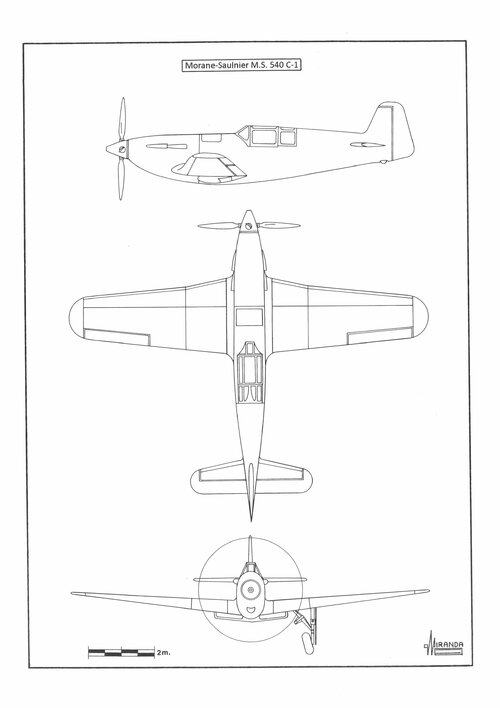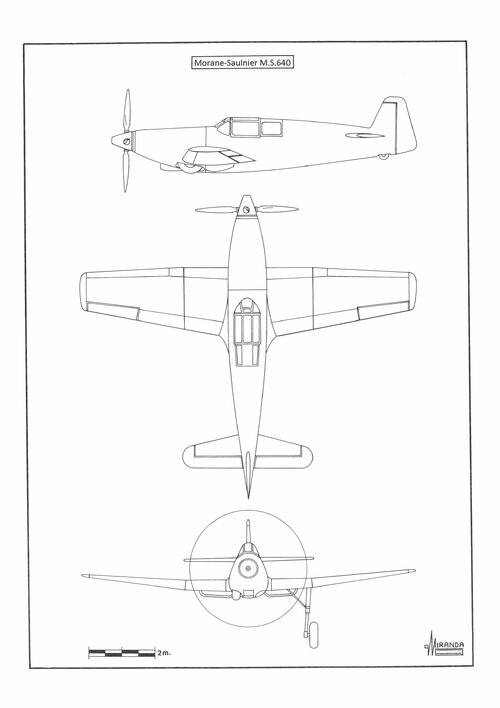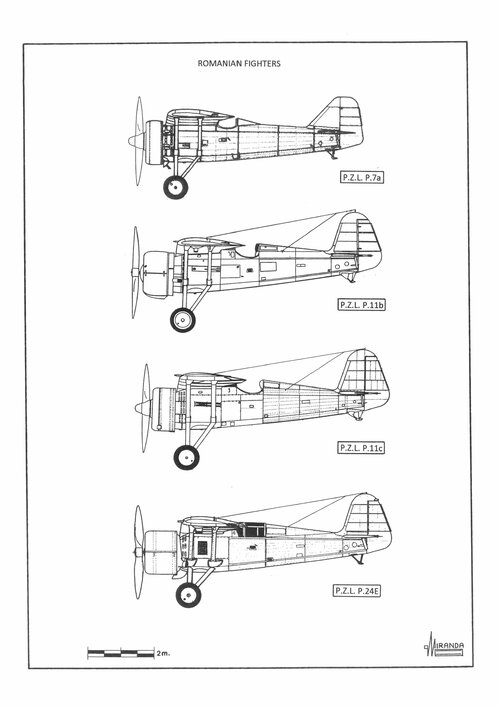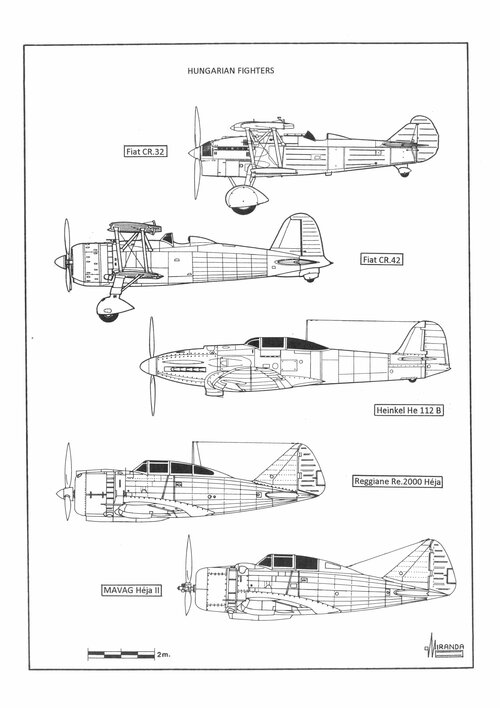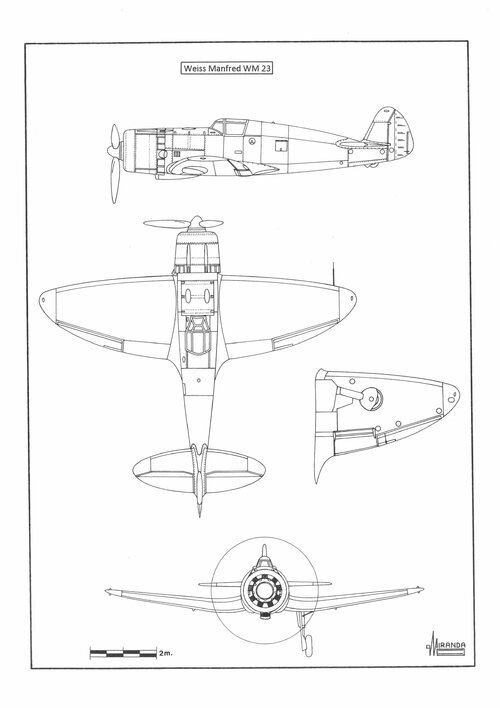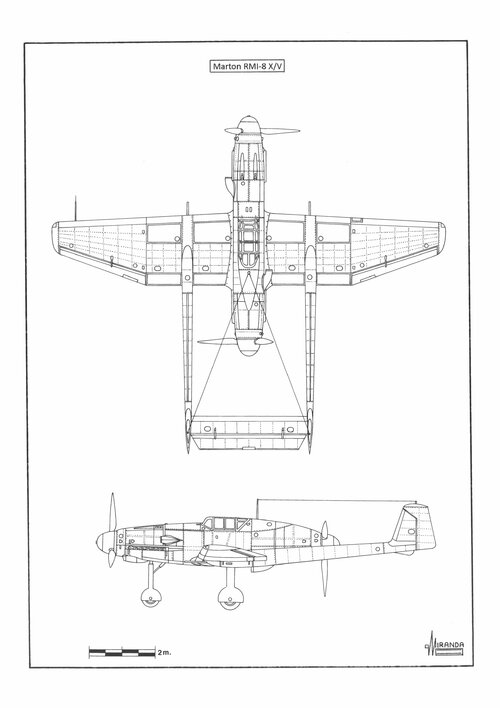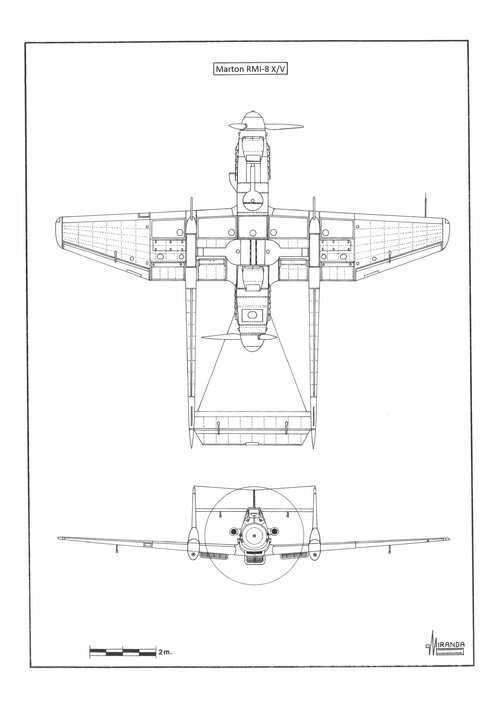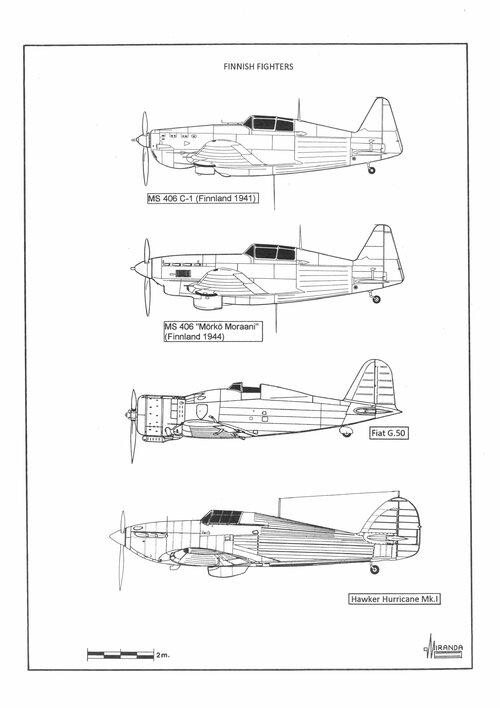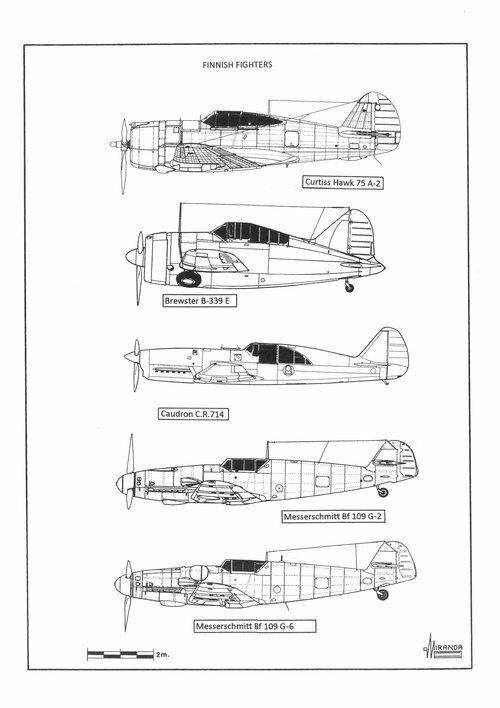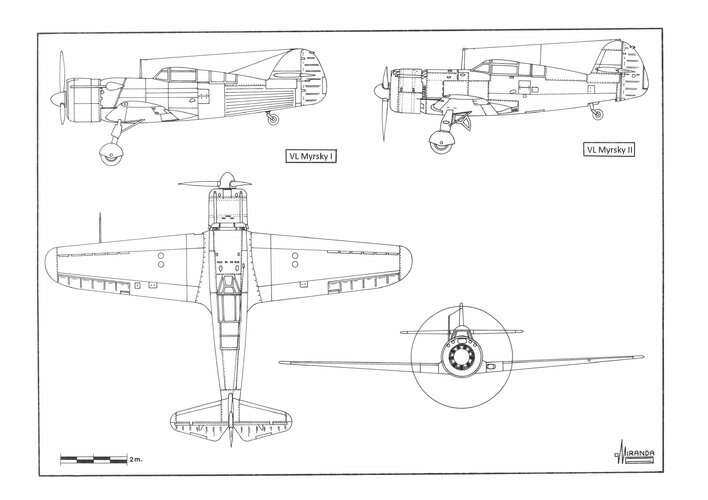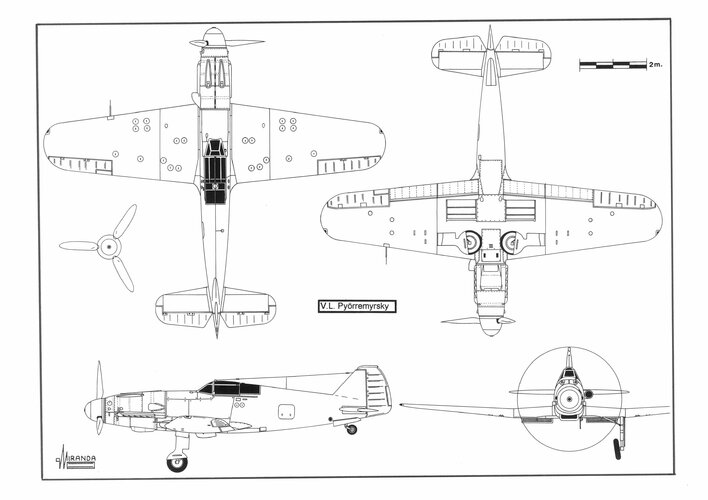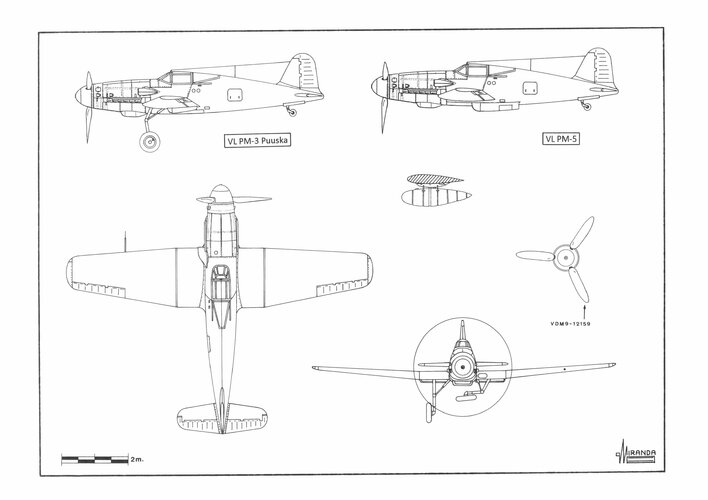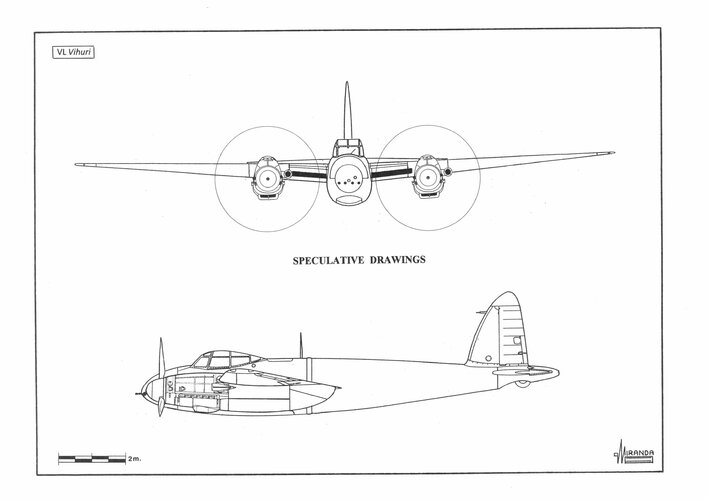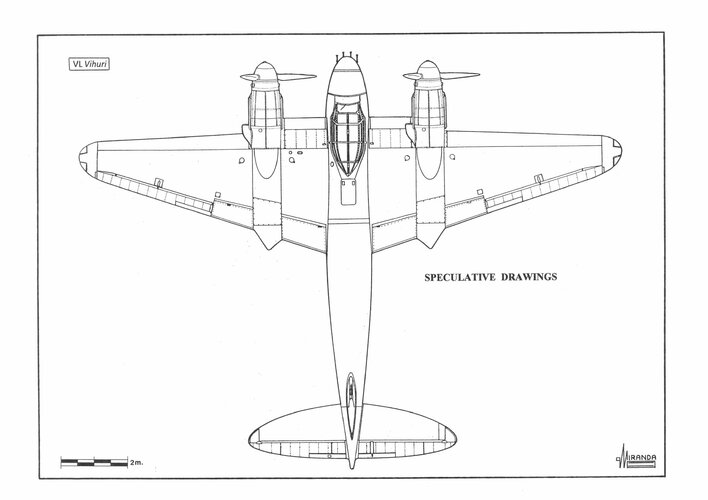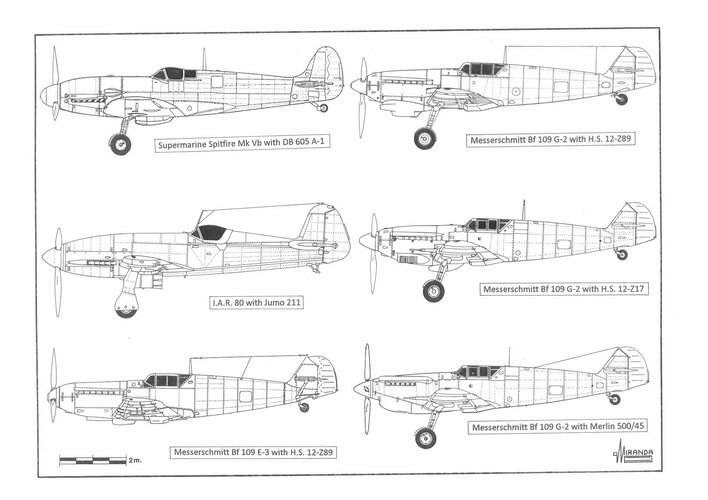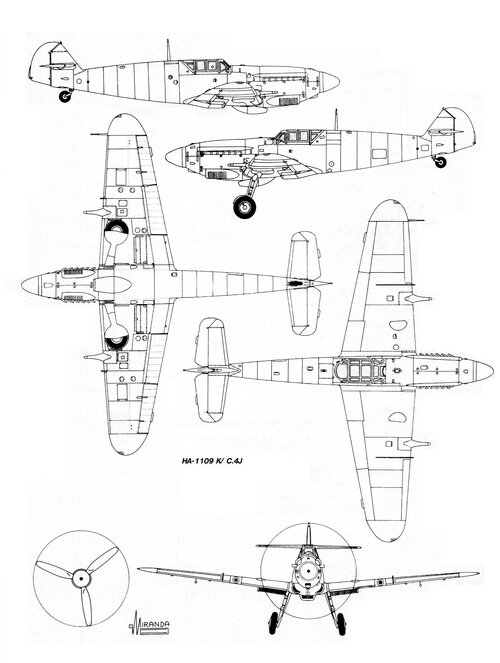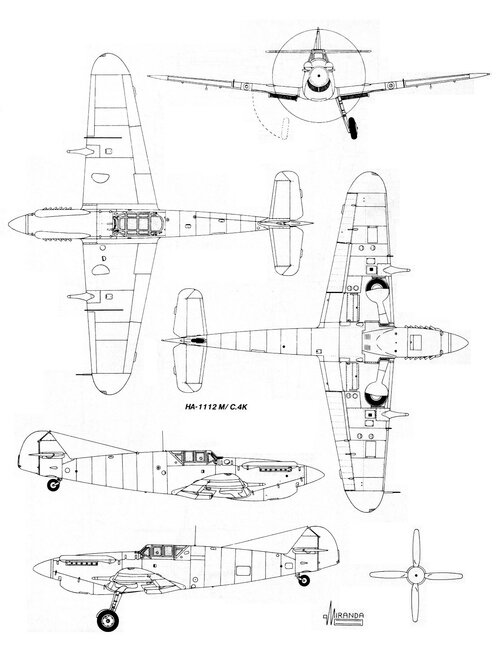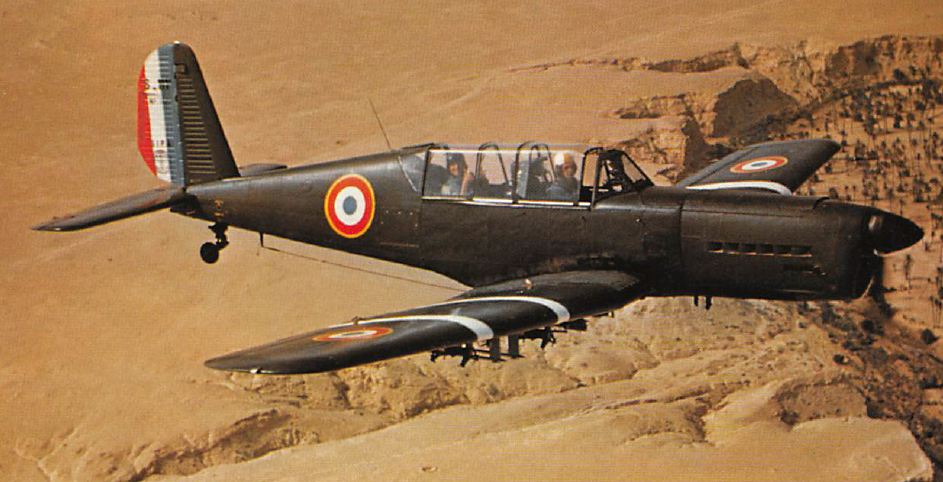- Finland (30 November 1939 to 4 September 1944)
After obtaining its independence in 1917, the new State created the
Ilmailuvoimat (Aviation Force) with Russian and French war surplus airplanes. In 1920 Finland signed the Dorpat peace treaty with Russia and in January 1930 the Aviation Force was re-named
Ilmavoimat (Air Force).
Between 1929 and 1934 the Finnish Air Force was strengthened with the acquisition of twenty Gourdou-Lesseurre GL-22C fighters, twelve Koolhoven FK.31 two-seat fighters, sixteen Aero A.32 light bombers, twenty-five Blackburn Ripon IIF bombers, seventeen Bristol Bulldog Mk.IVA fighters, six Junkers K-43 bombers and eighteen de Havilland D. H. 60 Moth elementary trainers
In 1935, thirteen Fokker C.VE reconnaissance airplanes were acquired. A year later, the Finns launched urgent aircraft modernisation programme, by acquiring three Avro Anson Mk.I transports, four Fokker C.X light bombers (along with the license to manufacture another thirty units), seven Fokker D.XXI fighters (along with the license to manufacture thirty-five units more) and eighteen Bristol Blenheim Mk.I bombers (along with the license to manufacture 45 additional units).
In 1937 a Five-Year development Plan for the
Ilmavoimat started. It consisted of the creation of four Army-cooperation squadrons, three Bomber squadrons, three Fighter squadrons and one Maritime squadron.
On 30 November 1939, the Soviets attacked the Finland eastern border with 450,000 men (20 divisions), 2,000 tanks, 2,050 cannons and 3,250 aircraft from types Polikarpov I-152, I-153, I-16, R-5, R-Z and U-2, Tupolev SB-2M103 and TB-3, Ilyushin DB-3 M and Beriev MBR-2.
The Finnish Armed Forces had 327,000 men (5 divisions), 20 tanks, 425 cannons, 2 armored ships and 5 submarines. The Ilmavoimat strength was 135 aircrafts: thirty-six Fokker D.XXI, ten Bristol Bulldog Mk.IVA, seventeen Bristol Blenheim Mk.I, thirty-two Fokker C.X, seven Fokker C.VE, fourteen Blackburn Ripon IIF, four Junkers F.13, three de Havilland Moth, three V.L.
Saaski and one V.L.
Kotka.
The Finns fought fiercely, causing so many losses to the Soviets that they were forced to sign an armistice on 13 March 1940. The international community condemned the aggression by expelling the Soviet Union from the League of Nations on 14 December 1939 and offering military aid to Finland.
The
Ilmavoimat received two-hundred-and-ten new planes: thirty Gloster Gladiator Mk.II, twenty-two Bristol Blenheim Mk.IV, thirty Morane-Saulnier M.S.406, thirty-two Fiat G.50, forty-four Brewster B-239, twenty-five Gloster Gauntlet Mk.II, ten Hawker Hurricane Mk.I, one Douglas DC-2, twelve Westland Lysander Mk.I, three Fokker C.V and one Fokker F.VIIa. Many of these models were technologically superior to the Soviets, as were the tactics used by the Finnish pilots, as proved in combat.
In December 1939 the Finnish fighters shot down 60 Soviet airplanes and the
Ilmavoimat lost 14. In January 1940, the Soviets lost 53 aircraft in air-combat against10 Finnish loses. In February, the Soviets changed their aerial tactics, using formations of up to 350 bombers and fighter escorts, to air support the land forces and bomb the population centres.
The Finnish fighters carried out 2,000 sorties and 300 aerial combats, shooting down 71 Soviet aircrafts. Nine others were shot down by
Flygflottilj 19, Swedish volunteer air unit that operated in Northern Finland with twelve Gloster Gladiator Mk.I and five Hawker Hart. In March, the
Ilmavoimat destroyed 20 more Soviet aircraft, losing 8 aircraft of their own.
The period between 30 November 1939 and 13 March 1940, known as
Winter War, cost 579 aircraft to the Soviets and 74 to the Finns. The loss of prestige inflicted to the USSR during the unequal fight, convinced the Germans that its advanced technology could easily neutralize the numerical superiority of the Red Army in a future
Blitzkrieg.
The German-Soviet war, launched on 22 June 1941, also signaled the end of peace for Finland. The bombing carried out by the Red Air Force against several Finnish cities, on the 25 of the month, was considered an act of war and the combats continued. The new period of clashes lasted until September 1944 and was named
Continuation War by historians.
At this stage, the Finns also got local air superiority using fighters Brewster, Hawk and Messerschmitt against the Soviet MiG-3, LaGG-3, Yak-7, La-5, Il-2 and Pe-2, who were joined by 10,377 Lend-Lease Hurricane, Airacobra and Tomahawk fighters. The expected defeat of the Werhmatch, led the Finns to initiated efforts to reach a peace settlement with the Soviets.
On 4 September 1944, a peace treaty was signed by which Finland retained its independence in exchange for losing some territories. During the
Continuation War, 3,313 Soviet planes were shot down by Finns fighters and 1,345 by the anti-aircraft artillery. The
Ilmavoimat lost 257 aircraft in combat, 100 in training and 215 due to other causes.
Finnish Fighters
Bristol Bulldog Mk.IIA (286 kph)
Two aircraft were supplied by Sweden on 15 December 1939.
They crashed in accidents in 1940 and 1942.
Engine: one 440 hp Bristol
Jupiter VIIF. Armament: two 0.303 in Browning machine guns.
Bristol Bulldog Mk.IVA (362 kph)
On April 1934 Finland ordered 17 units.
During the
Winter War they shot down two I-16 and two SB-2M103.
Engine: one 654 hp Bristol
Mercury VI S.2. Armament: two 0.303 in Browning machine guns.
Gloster Gauntlet Mk.II (370 kph)
On February 1940, 25 aircraft were supplied by the South African Government as support to Finland. They were used as advanced trainers.
Engine: one 645 hp Bristol
Mercury VI S.2. Armament: two 0.303 in Vickers machine guns.
Gloster Gladiator Mk.I (407 kph)
On 10 January 1940, the Swedish
Fligflottilj 19 arrived in Finland with 12 aircraft who managed to shoot down four SB-2M103, one TB-3, one DB-3M and three I-152. One Gladiator was lost in combat and two in accidents.
Engine: one 830 hp Bristol
Mercury IX. Armament: four 0.303 in Browning machine guns.
Gloster Gladiator Mk.II (414 kph)
Thirty aircraft were delivered to Finland between January and February 1940.
During the
Winter War three I-152, two I-153, seven I-16, nine SB-2M103, one DB-3, one R-5 and four R-Z were shot down. During the
Continuation War they shot down one MiG-3, two U-2 and one R-5, losing eleven Gladiators in combat and two in crashes.
Engine: one 830 hp Bristol
Mercury VIIA. Armament: four 0.303 in Browning machine guns.
Fokker D.XXI Mercury (418 kph)
Seven aircraft with 840 hp Bristol
Mercury VII engines were acquired on 18 November 1937. Another fourteen were built under license by
Valtion Lentokonetehdas (V.L.) in Tampere-Härmälä, powered by Bristol
Mercury engines manufactured by P. Z. L. in Poland and delivered between November 1938 and March 1939. A second batch of 21 aircraft with
Mercury engines, built in Tampere-Tampella, was delivered between March and July 1939.
Armament: a pair of 7.7 mm Vickers machine guns fitted in the front fuselage and two wing-mounted 7.7 mm Vickers.
Fokker D.XXI Wasp (434 kph)
On May 1939, fifty plans with 825 hp Pratt & Whitney R-1535-SB4-C
Twin Wasp Junior American engines, were ordered to V.L.-Kuorevesi. They did not arrive in time to participate in the
Winter War as they were delivered between January and June 1941. Less maneuverable than the Polikarpov fighters, the Fokker flew in 'finger four' formations and used 'zoom-and-climb' combat tactics. During the
Winter War they shot down seventy-three SB-2M103, twenty-two DB-3M, two R-5, twelve I-16 and three I-152, losing twenty-three aircraft that were shot down in combat, one that was rammed by I-153, one by friendly antiaircraft artillery and forty-two due to crashes, sabotage and strafing.
Armament: four wing-mounted 7.7 mm Vickers machine guns.
Hawker Hurricane Mk. I (518 kph)
In the second week of March 1940, twelve aircraft were donated by Great Britain.
Two planes were destroyed in transit. Ten were delivered too late to see action in the
Winter War. Due to scarcity of replacement parts, only five-and-a-half kills were achieved with these planes. Five Hurricanes were destroyed in battle during
Continuation War and two from anti-aircraft fire. Engine: one 1,030 hp Rolls-Royce
Merlin II.
Armament: eight wing-mounted 0.303 in Browning machine guns.
Morane-Saulnier M.S. 406 C1 (486 kph)
Thirty units were donated by French government on February 1940. Twenty five ex-
Armée de l'Air fighters were supplied by Germans on October 1940 and two more on October 1942. Between July and September 1942, another 30 aircraft were purchased from the Vichy government. The aircraft were delivered without the engine mounted cannon H.S. 404 and the Finns instead installed a 12.7 mm Berezin UB or a Colt M-2 heavy machine guns. They also replaced the two-wing mounted 7.5 mm MAC 34 A (drum feed) machine guns by two 7.7 mm (belt feed) Brownings and the Chauvière airscrew by a Hamilton Standard.
The engine was an 860 hp Hispano-Suiza H.S.12 Y-31.
Between 17 February 1940 and 12 July 1944, the Moranes shot down twenty SB-2M 103, fourteen I-153, twelve I-16, fourteen MiG-3, ten I-152, six Hurricane, five DB-3M, six Tomahawk, four Airacobra, five IL-2, four MBR-2, two LaGG-3, one La-5, three Pe-2, two R-5, one R-Z, one Boston, one Yak-9 and one U-2, fourteen of them during the
Winter War.
Morane-Saulnier M.S. 410 C1 (509 kph)
Fifteen ex-
Armée de l'Air units were supplied by Germany between July and November 1941.
Engine: one 860 hp Hispano-Suiza H.S.12 Y-31 driving one Ratier airscrew. Armament: five 7.5 mm (belt feed) MAC 34 M39 machine guns
Mörkö Moraani (525 kph)
Starting from June 1944, forty-one Moranes were re-engined with one 1,100 hp Klimov (Hispano-Suiza) M-105 P driving one VISh-61P constant speed airscrew.
Only three modified aircraft entered combat during the
Continuation War, shooting down one La-5 and two Airacobra.
Armament: one engine mounted 20 mm MG 151 cannon and two wing-mounted 7.7 mm (belt feed) Browning machine guns.
Fiat G.50 (472 kph)
Thirty-two aircraft were donated by Italy between 18 December 1939 and 19 June 1940. Two were lost in transit, one in combat, another by the anti-aircraft artillery and six in crashes.
Engine: one 840 hp Fiat A74 R1 C38 engine, driving one Fiat 3D 41-1 airscrew. Forty-two ex-C.R.42 Swedish-made spinners were installed to protect the variable-pitch mechanism from frost damage.
During the
Winter War the Fiat fighters shot down one I-16, four DB-3M, one SB-2M103 and two I-153. During the
Continuation War, twenty-two SB-2M103, two MiG-3, fifteen I-153, two MBR-2 , two I-16, three I-152 and one DB-3M.
Armament: two 12.7 mm Breda-SAFAT MC machine guns.
Brewster Model 239 (484 kph)
Out of the 44 aircraft purchased on 16 December 1939, six arrived in Finland before the
Winter War ended and the rest continued arriving until 1 May 1940.
During the
Continuation War the Brewsters shot down sixty-two I-153, thirty-five MiG-3, thirty-nine Hurricane, twenty-three SB-2M103, fifteen I-16, nine LaGG-3, eight R-5, five Pe-2, four MBR-2, three I-152, three DB-3M and one Airacobra. They lost 19 aircraft of their own.
Engine: one 950 hp Wright R-1820 G-5. Armament: one .30 cal MG 40 and three .50 cal MG 53-2 machine guns. The Finns installed new Revi 3/c reflector gunsights, armored headrest and seat back plates.
Six aircraft were equipped with captured Russian M-63 engines.
Curtiss Hawk 75 (500 kph)
Nine H.75 A-2 and seven H.75 A-4 ex-
Armée de l'Air fighters were supplied by Germany in June 1941 and another fifteen H.75 A-4 between June 1943 and January 1944.
Eleven ex-Norwegian H.75 A-6 were additionally supplied between July and August 1941.
During the
Continuation War, the Hawks managed to shoot down twenty-one I-153, eleven I-16, three DB-3F, fifteen MiG-3, sixteen LaGG-3, two Yak-1, nine Pe-2, three MBR-2, two U-2, one Boston and two La-5. They lost 8 aircraft of their own.
The A-2 and A-6 models were powered by a 1,200 hp Pratt & Whitney R-1830-SC3-G engine and A-4 models by a 1,200 hp Wright Cyclone R-1820-95. Armament: six 7.5 mm FN / Browning Mle 38 machine guns.
Caudron C-714 (465 kph)
Six aircraft were donated by France on 12 March 1940, being delivered in May.
Assigned to the LeLv 60 reconnaissance squadron, after a few crashes, due to the fragility of the landing gear, flying them was prohibited in September 1941.
Engine: one 500 hp Renault 12 R-03. Armament: four 7.5 mm MAC M39 (drum feed) machine guns.
Messerschmitt Bf 109 G-2 (522 kph)
On 1 February 1943, forty-eight ex-Luftwaffe fighters were ordered and delivered between March and May. Engine: one 1,475 hp Daimler-Benz DB 605 A-1. Armament: one 20 mm MG 151 cannon and two 7.9 mm MG 15 machine guns.
Messerschmitt Bf 109 G-6 (621 kph)
Between May and August 1944, 109 aircraft were delivered, along with two G-8 reconnaissance fighters. Between 24 March 1943 and 4 September 1944, the Bf 109 Finns shot down 663 Soviets aircraft, losing 13 in combat of their own, 5 shoot down by anti-aircraft fire, 7 in crashes and 5 due to technical failures. Engine: one 1,475 hp DB 605 AM. Armament: one 30 mm MK 108 cannon and two 13 mm MG 131 machine guns.
Indigenous Designs
Ilmailuvoimain Lentokonethdas - IVL (Aviation Force Aircraft Factory) made under license, between 1922 and 1925, hundred-and-twenty Hansa-Brandenburg W.33 floatplanes, thirty-four Caudron C.60 and six Morane-Saulnier M.S.50c
The first indigenous fighter, the prototype IVL C.24, with
parasol wing inspired by Morane designs, was flown on 16 April 1924 and the C.25, an improved version with narrower-chord wing, was flown on June1925. Both models suffered longitudinal stability problems caused by the excessive weight of the Siemens Sh 3A engine. Its serial production was dismissed after an accident suffered by the C-25
The next attempt to provide the
Ilmailuvoimat with an indigenous fighter was the IVL D-26
Haukka. The biplane prototype was flown on 17 March 1927, manifesting structural faults and flat spin tendence. Both problems were not fully resolved in its successor D-27
Haukka II and its production was again dismissed in favor of licence-built Gloster Gamecock Mk.II.
In 1928 the IVL became
Valtion Lentokonetehdas-V.L. (State Aircraft Factory). Before the war, V.L. had built some self-designed trainers and second line aircrafts: it produced thirty-three units of the
Saaski reconnaissance airplanes in 1928, seven
Kotka light bombers in 1930, thirty-one
Tuisku advanced trainers in 1933, twenty-four
Viima elementary trainers in 1935 and forty-one
Pyry advanced monoplane trainers in 1939, but no fighters.
V.L. Myrsky (470 kph)
On 8 June 1939, the Ministry of Defence instructed V.L. to design a new single-seat fighter powered by a Bristol
Taurus III engine.
V.L. just didn't have experience with high speed aircraft, there wasn't any duraluminium production in Finland and nobody would sell aluminium in 1939. The
Taurus engine was not available due to war and a 1,065 hp (with 87 octane fuel) Swedish-built civilian version of the Pratt & Whitney R-1830 was chosen. V.L. then decided to use the same construction system of the Fokker D.XXI. The wings and tail surfaces were made of wood/plywood and the fuselage structure was welded chrome-molybdenum steel tube with fabric and plywood coating.
The prototype was flown on 23 December 1941, manifesting serious yaw to port, excessive wing loading and engine problems. On 30 May 1942, the Department of War Supplies had placed an order for three pre-production aircraft called
Myrsky I.
Built between April and June 1943, the three planes suffered accidents and two of them were destroyed, during diving tests, for fractures of the wing attachement bolts and plywood skinning under stress, due to defective bonding.
The investigation board confirmed that flutter had caused the wings to break up and recommended that they be strengthened in the forty-seven
Myrsky II (525 kph) that began to be manufactured in July 1944. The fuselage fabric covering was replaced in these aircraft with plywood sheeting, the elevators and the landing gear were strengthened and a VLS 8002 constant-speed propeller (with wooden blades and cooling fan) was installed. The construction of the
Myrsky II complicated when the availability of the German
Tego-film glue ended, after the destruction of its manufacturing plant in 1943. It was replaced by bad Finnish glues based on casein.
Maximum permissible diving speed was raised to 650 kph and maximum engine revolutions were restricted to 3,060 r.p.m. The armament consisted of four 12.7 mm VKT LKk/42 machine guns.
The
Myrsky II entered service with
Ilmavoimat in July 1944, being used mainly in reconnaissance missions.
In August and September, the
Myrsky II fought against two Yak-7, three Yak-9 and two La-5 of the 195 IAP, damaging several of them but without achieving any victory before ceasefire. Until being retired from service, on February 1948, the
Myrsky fighters had suffered a total of 51 accidents, with the loss of 21 aircrafts and four pilots.
V.L. Pyörremyrsky (522 kph).
At the end of 1942, the V.L. tried to negotiate a full reparation license for the Messerschmitt Bf 109 G-2, but complete sets of drawings and tools were never delivered.
The
Ilmavoimat had been particularly concerned with the debut in some numbers of the Lavockin La-5 Soviet fighter and the possibility of the Germans to suspend the supply of fighters. The
Pyörremyrsky programme began when the
Ilmavoimat ordered two new Finnish fighters into design phase:
Pyörremyrsky and
Puuska.
The design was given the following basic parameters:
At least 50 km/h faster of the fastest enemy bomber
If faster than enemy fighters, it may be less agile and worse climber
If slower than enemy fighters, it must be better climber and more agile
By early 1943, V.L. was instructed to design a single-seat fighter powered by one 1,475 hp Daimler-Benz DB 605 AC engine driving a VDM three-bladed airscrew. Since it was impossible to import aluminium due to the war, the
Pyörremyrsky should be built using only domestic materials, incorporating the lessons learned from the construction of the
Myrsky.
The single-spar wing was built in wood/plywood, with metal-framed, fabric-covered ailerons and electrically-operated metallic flaps. The tail assembly was also built in a similar way with metal-framed movable surfaces. The forward fuselage structure was welded chrome-molybdenum steel tube, and the aft fuselage was a Soviet-style wooden
monocoque structure. The armament consisted of one engine-mounted 20 mm MG 151 cannon and two 12.7 mm LKk / 42 machine guns in the nose.
Prototype construction was low, affected by the unavailability of the German
Tego-film glue and the airplane was still not completed in September 1944, when the peace treaty was signed. On 21 November 1945 during their flight testings the new fighter proved to be more manoeuvrable than the Bf 109 G-6, with an outstanding climb rate and few teething troubles.
Unfortunately, the series production was dismissed because of the difficulty in obtaining a supply of Daimler-Benz engines.
V.L. Puuska (650 kph)
In the fall of 1943, V.L. was instructed to design a single-seat lightweight fighter, with narrow-track undercarriage, powered by one 1,475 hp Daimler-Benz DB 605 AC engine driving three-bladed VDM airscrew.
The design should adapt to the new fighter tactics of the
Ilmavoimat, which was considered outdated the dog fight, preferring the ‘zoom and climb’ to either repeat the attack, or break off the contact with an advantage in speed and climb. To meet the specification, it was necessary to design a light airframe to take full advantage of the 1,475 hp of the available engine.
The result was the
Puuska, an 80 per cent smaller and light version of
Pyörremyrsky that V.L. offered to the
Ilmavoimat at the end of 1943. Out of the five proposed designs, the Finnish Air Force Material and Procurement staff selected two on 24 January 1944, called PM-3 and PM-5, to be built as prototypes that were to be ready on 1 July 1945. The PM-3 should use the under nose oil cooler and two radiators from Bf 109 G-2 under the wings, local manufacture Sperry artificial horizon, Hollsman compass and Vaisala reflector gunsight.
The double-joint undercarriage retraction system would use Siemens and Stromberg electrical motors and two 660 x 160 mm wheels from Bf 109 G-2. The proposed armament was one engine-mounted 20 mm MG 151 cannon, with 300 rounds, and two 12.7 VKT LKk/42 mm nose-mounted machine guns.
Wingspan: 9.2 m, length: 7.5 m, wing area: 13.5 sq.m, maximum weight: 3,200 kg, maximum speed: 620 kph, climb rate: 6.2 min to 6,000 m., service ceiling: 12,000 m.
The PM-5 was designed as a point-defence interceptor, very fast and with amazing climb rate. To save weight they decided not to install armour and the armament was reduced to a MG 151 with 210 rounds. The internal fuel was also reduced to only 400 litres, with the possibility of carrying two drop tanks of 140 litres each under the wings.
Oil and glycol radiators were grouped in a ventral nacelle to save drag.
It was expected that series aircraft were equipped with a Telefunken FuG-7a R/T device and used the main wheels from Soviet LaGG-3 and the retractable tail wheel from DB-2 bomber. The building system should be the same used in the
Pyörremyrsky, but the project was cancelled on March 1944 due the low availability of DB engines.
Maximum weight: 2,650 kg, maximum speed: 682 kph, climb rate: 4.7 min to 6,000 m, service ceiling: 14,000 m.
V.L. Humu (430 kph)
In October 1942, the
Ilmavoimat placed an order with the V.L. for four prototypes of the
Humu, a copy of the Brewster 239 fighter that should be built in wood/plywood/steel with the same technique used in the Fokker D.XXI. It was expected to build a series of 55 aircraft, using instrument and M-63 engines from captured Soviet airplanes.
On 8 August 1944, the prototype was flown, powered by a 930 hp Shvetsov M-63, reaching the 420 kph. A surplus Brewster fuselage and new wings built in wood/plywood by V.L. had been used for its construction. It turned out to be too heavy (2,895 kg) manifesting problems of longitudinal stability, and the initiation of series production was delayed pending results of flying tests. The proposed armament were three 12.7 mm LKk / 72 machine guns.
The project was cancelled in the summer of 1944.
Fokker D.XXI modified
Earlier, in 1939, the Finns had experimentally fitted two underwing 20 mm Oerlikon cannons in the Fokker FR-76.
On 29 January 1940 the FR-76 shoot down a Soviet DB-3M bomber with just 18 rounds, but the excessive weight limited its performances and the experiment was discontinued.
Another attempt to improve the outdated fighter consisted in installing a modified wing (the so-called E-wing) in the FR-121. It had more dihedral and was more tapered that the standard wing.
During flight tests it was found that the gun access panel blew off as a result of the air pressure in the gun bay.
Finally, two Fokkers were modified with a retractable landing gear: the FR-117 (
Mercury) on 27 April 1941, and the FR-167 (
Twin Wasp) on 2 March 1942. Both aircraft were later equipped with a fixed gear, and the whole idea was dropped because the speed improvement was only 15-37 kph, depending of altitude.
V.L. Vihuri
In 1943 the Finns were waiting to receive two crashed British de Havilland Mosquito, requested from Germany to serve as models for planned production. One would be repaired and another one would be teared into parts to make blueprints. The Finns are great wood workers and probably would have been able to circumvent the unavailability of balsa and
Tego-film, with the technique used by the Soviets in the construction of the Polikarpov I-16, which already had been tested in the
Pyörremyrsky. The Polikarpov fuselage was built in two halves, like the Mosquito, and each half comprised pine frames and longerons. The
monocoque skin was produced from layers of birch strips glued cross-grained and molded on a former.
The new aircraft, called
Vihuri, would have possibly been used as fighter-bomber with nose-mounted machine guns. It would have been powered by two 1,475 hp German Daimler-Benz DB 605 AC engines and used the landing gear of the Bristol Blenheim. It was estimated that its performances would have been inferior to those of the Mosquito because of its greater structural weight. Production plans would have delivered between mid of 1946 and December 1947, due to the overload of work that represented for V.L. the repair of fighters in service, the production of the
Myrsky and the
Mörkö-Moraani conversion.
Bibliography
Books
Keskinen, K.,
Suomen Ilmavoimien Historia LeR2, Edita OYJ, 2001.
Keskinen, K.,
Finnish Air Force 1939-1945, Squadron/Signal Publications, 1998.
Geust, K.,
Baltic Fleet Air Force in Winter War, Red Stars 5, Apali, 2004.
Geust, K.,
The Winter War in the Air, Red Stars 7, Apali, 2011.
Cuny, J.,
Curtiss Hawk 75, DOCAVIA nº 22, Editions Lariviere, 1985.
Green, W.,
Warplanes of the Second World War, Fighters, Volume Four, MacDonald, 1961.
Bowers, P.,
The Curtiss Hawk 75, Profile Number 80.
Keskinen, K.,
Curtiss Hawk 75, Tietoteos, 1984.
Luukkanen, E.,
Fighters Over Finland, MacDonald, 1963.
Keskinen, K.,
Suomalaiset Hävittäjät, Suomen Ilmavoimient Historia Nº14, 1990.
Jong, P.,
Le Fokker D.21, Collection Profils Avions Nº9, Lela Presse, 2005.
Comas, M.,
Le Morane-Saulnier M.S.406, Histoire de l’Aviation Nº5, Lela Presse, 1998. Vergnano, P.,
Fiat G.50, Ali d’Italia, La Bancarella Aeronautica, 1997.
Maas, J.,
F2A Buffalo in Action, Squadron/Signal Publications Nº81, 1987.
Stenman, K.,
Mersu Messerschmitt Bf 109G in Finnish Service, Koala-Kustannus, 2017.
Stenman, K.,
Finnish Air Aces of World War II, Osprey Aircraft Aces Nº23, 1988.
Keskinen, K.,
Suomen Ilmavoimien Historia 18 LeR3, Uudenmaan Paino, 2001.
Publications
Partonen, K., “Mörkö-Moraani”,
IPMS Mallari, 1984.
Good, M., “Un Fantôme Venu du Froid”,
Wingmaster Magazine, Janvier 2000.
Stenman, K., “Le Morane Sort ses Griffes”,
Le Fanatique de l’Aviation Nº 554, Janvier 2016.
Gréciet, V., “Morane-Saulnier M.S. 406 C1”,
Aèrojournal Nº20.
Hazewinkel, H., “Fokker C.X”,
Le Fanatique de l’Aviation Nº 50.
Stenman, K., “38 to 1 the Brewster 234 in Finnish service”,
Air Enthusiast/Forty-Six.
Millot, B.,”Brewster Buffalo”,
Le Fanatique de l’Aviation Nº 92 to 95.
Keskinen, K., “The Finnish Air Force in the Winter War”,
SAFO, April 1990, Vol.14, Nº2.
Hurme, M., “Flygflottilj 19, the Swedish Volunteer Air Unit”
SAFO Nº53, January 1990.
Stenman, K., “Finland’s Fighter Finale”,
Air Enthusiast/Twenty-Three.
Stenman, K., “A violent Finnish Wind”,
Air Enthusiast/October 1971.
Heinonen, T., “V.L. Pyörremyrsky”,
Ilmailu Magazin Nº4 and 10, 1948.
Timonen, J.,”Pyörremyrsky osa 2”,
IPMS Mallari Nº115, 5/1996.
Valtonen, H., “Guidebook”,
Keski-Suomen Ilmailmuseo, 1999.
Guttman, J., “Aerial Oddities”,
Aviation History, May 1998.
Uolamo, S.,”Pyörremyrsky Entisöinti osa 1”,
Suomen Siivet Nº1 and 2, 1973.
Muikku, E., “Pyörremyrsky”,
IPMS Mallari Nº16, 1975.
Raunio, J.,”Pyörremyrsky”,
Lentäjän Nákökulma, 1991.
Raunio, J., “V.L. Puuska”,
Suomen Ilmailuhistoriallinen, Lehti 2/1998.
Correspondence with Hannu Valtonen, 1999.

